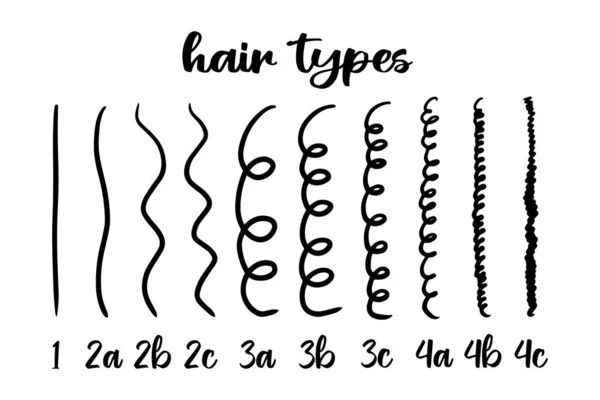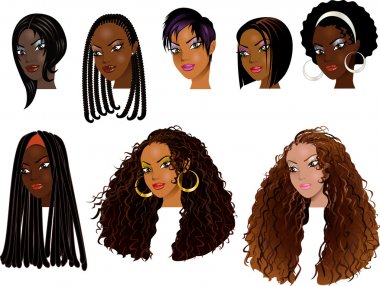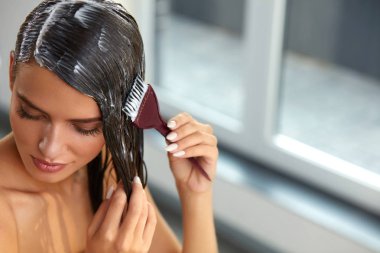How to Grow 4C Hair: A Comprehensive Guide to Achieving Length and Health

Hello Curl Enthusiasts!
Embarking on the journey to grow and maintain healthy 4C hair is an exciting venture, and we’re here to guide you every step of the way. Whether you’re a seasoned naturalista or just beginning your natural hair care journey, our comprehensive guide on ‘How to Grow 4C Hair’ is your go-to resource for achieving lush, vibrant curls.
In this article, we’ll delve into practical tips, natural methods, and essential tricks tailored specifically for the unique needs of 4C hair growth. Our goal? To empower you with the knowledge and insights needed to cultivate not just length, but also optimal health for your beautiful curls.
This post contains affiliate links and I may earn a small commission when you click on the link at no additional cost to you. As an Amazon Affiliate, I earn from qualifying purchases, thank you.
Get ready to explore a world of possibilities as we share everything from tried-and-true techniques to beginner-friendly approaches. Let’s embark on this journey together, because your 4C hair deserves the very best. Let’s dive in!

Understanding 4C Hair
Before we dive into the tips and techniques, let’s first understand what 4C hair is all about. 4C hair is characterized by tightly coiled strands with a zig-zag pattern.
Unlike other hair types, 4C hair lacks a defined curl pattern and requires specific care to keep it healthy and thriving. This hair type is prone to dryness, shrinkage, and breakage, making moisture retention a top priority.

The Science of Hair Growth
Hair growth is a natural process that occurs in cycles. On average, hair grows about half an inch per month, which translates to approximately six inches of growth per year. However, individual hair growth rates may vary depending on factors such as genetics, overall health, and hair care practices.
To understand how to maximize hair growth, it’s essential to know the stages of the hair growth cycle:
- Anagen Phase: This is the active growth phase, during which the hair follicle produces new hair cells. The hair grows steadily during this phase, which lasts for several years.
- Catagen Phase: In this transitional phase, the hair follicle shrinks, and hair growth slows down. This phase lasts for a few weeks.
- Telogen Phase: Also known as the resting phase, the hair follicle remains dormant during this stage. Eventually, the old hair sheds, making way for new hair in the anagen phase.
By understanding the hair growth cycle, we can implement strategies that promote healthy 4C hair growth and minimize breakage.
How To Grow 4C Hair Faster And Healthier
Now that we have a solid foundation of knowledge, let’s explore some effective tips on how to grow 4C hair faster and healthier. These strategies will help you retain length, maintain moisture, and protect your hair from damage.
1. Moisture is Key
Moisturizing your 4C hair is crucial for promoting growth and preventing dryness. Due to its tight coil pattern, 4C hair has a tendency to become dry and brittle. To combat this, prioritize deep conditioning and moisturizing your hair regularly.
- Deep Condition Regularly: Deep conditioning is an essential step in promoting hair growth for 4C hair. Look for deep conditioners specifically formulated for 4C hair and incorporate this step into your hair care routine. Deep conditioning helps repair damage, improve elasticity, and prevent breakage.
- The LOC Method: The LOC method (Leave-in, Oil, Cream) is a popular technique for moisturizing and sealing in moisture for 4C hair. Start by applying a leave-in conditioner to your damp hair, followed by a hair oil to lock in moisture, and finish with a hair cream or butter for added hydration.
2. Gentle Detangling
Detangling 4C hair can be a daunting task, but it’s essential to do it properly to minimize breakage. Use your fingers or a wide-tooth comb to gently detangle your hair, starting from the ends and working your way up. Avoid aggressive brushing or combing, as it can lead to unnecessary breakage.
- Finger Detangling: Finger detangling is a gentle and effective method for removing knots and tangles from 4C hair. Apply a detangling product with a good slip to make the process easier. Take your time and be patient, focusing on one section at a time.
- Wide-Tooth Comb: When using a comb, opt for a wide-tooth comb to minimize damage. Start at the ends and gradually work your way up, being careful not to pull or yank on your hair.
3. Protective Styling for Growth

Protective styles are an excellent way to promote hair growth by minimizing manipulation and protecting your ends. Here are a few protective styling options for 4C hair:
- Two-Strand Twists: Two-strand twists are a versatile and low-maintenance protective style for 4C hair. They can be worn as is or unraveled for a twist-out style.
- Bantu Knots: Bantu knots are another stylish protective option for 4C hair. This technique involves twisting the hair into small knots, creating a unique and beautiful look. When unraveled, bantu knots create defined curls.
- Braids: Braiding your hair is a classic protective style that can be customized to suit your preferences. Whether you opt for cornrows, box braids, or Senegalese twists, braids provide excellent protection for your hair.
Remember to give your hair breaks between protective styles to allow it to breathe and receive proper care.
4. Trim Regularly
Contrary to popular belief, regular trims are essential for maintaining healthy hair and promoting growth. Trimming your hair helps to remove split ends, which can lead to breakage and hinder length retention. Aim to trim your hair every 3-4 months or as needed.
5. Avoid Heat Styling

Heat styling tools can cause damage and dry out your 4C hair, impeding growth. Minimize the use of flat irons and curling irons, and instead embrace heat-free styling methods. If you desire stretched hair, consider using alternative techniques like African threading or perm rods.
6. Monthly Hair Treatments for 4C Hair Growth
Monthly hair treatments are a rejuvenating and essential aspect of a comprehensive hair care routine. These treatments go beyond daily maintenance and provide an extra boost of nourishment to keep your hair healthy, vibrant, and resilient. Here’s a brief guide on the benefits and key considerations for incorporating monthly hair treatments into your routine:
Benefits of Monthly Hair Treatments:
- Deep Moisturization: Monthly treatments allow for a more intensive moisturization process, addressing dryness and promoting hydration from within.
- Repair and Strengthen: Treatments often include ingredients that repair and strengthen hair, minimizing damage caused by environmental factors, styling, and daily wear and tear.
- Enhanced Shine and Softness: Regular treatments contribute to a smoother and shinier appearance, enhancing the overall texture and feel of your hair.
- Preventive Care: Monthly treatments can act as preventive measures against split ends, breakage, and other common hair issues, fostering long-term hair health.
Key Considerations for Monthly Hair Treatments:
- Treatment Types: Explore various treatment options based on your hair’s specific needs. This might include deep conditioning masks, protein treatments, hot oil treatments, or specialized products targeting your hair concerns.
- Consistency is Key: Maintain a consistent schedule for your monthly treatments. This helps create a routine that your hair can benefit from regularly.
- Customization: Tailor your monthly treatments to your hair type, porosity, and specific concerns. This ensures that you’re providing targeted care for your unique hair characteristics.
- Follow Instructions: Adhere to the recommended application and processing times provided with each treatment product. Overusing or leaving treatments on for too long can have adverse effects.
- Scalp Health: Don’t forget to consider your scalp health. Some treatments focus on nourishing the scalp, contributing to an overall healthier environment for hair growth.
- Professional Treatments: Consider incorporating professional salon treatments into your routine. These treatments often use advanced formulas and techniques to address specific hair concerns.
7. Dietary Habits for Hair Growth

A well-rounded and nutritious diet is not only beneficial for overall health but also plays a role in hair growth. Incorporate foods rich in vitamins, minerals, and antioxidants into your diet to support healthy hair growth. Some hair-friendly foods include fatty fish, spinach, berries, avocado, eggs, and almonds.
8. Maintain a Healthy Scalp
A healthy scalp maintenance is essential for optimal hair growth. Take care of your scalp by keeping it clean and nourished.
Here are two simple and easy scalp-care exercises you can do:
- Scalp Massages: Regular scalp massages stimulate blood flow to the hair follicles, promoting growth. Use your fingertips to gently massage your scalp in circular motions for a few minutes each day.
- Scalp-Specific Treatments: Treat your scalp to targeted products that promote a healthy environment for hair growth. Look for scalp oils or treatments that contain ingredients like rosemary, mint, or tea tree oil to stimulate circulation and nourish the scalp.

9. Use the Right Hair Products
Finding the right hair products for your 4C hair is crucial for promoting growth and maintaining its health. Experiment with different products to determine what works best for your hair. Look for sulfate-free shampoos, moisturizing conditioners, and leave-in products designed specifically for 4C hair.
10. Protect Your 4C Hair At Night
Protecting your 4C hair at night is a key step in maintaining its health and maximizing growth. Nighttime care is often underestimated, but it plays a crucial role in preserving moisture, preventing breakage, and ensuring your curls stay defined and vibrant. Here’s a guide to help you establish an effective nighttime routine for your beautiful 4C hair:
1. Satin or Silk Bonnet/Scarf:
Invest in a satin or silk bonnet or scarf to protect your hair while you sleep. Unlike cotton, these materials reduce friction and help retain moisture, preventing the risk of split ends and frizz. Simply secure your hair in a loose, comfortable style before bedtime.
2. Pineapple Method:
For longer 4C hair, consider the pineapple method. Gather your hair high on top of your head, loosely securing it with a satin scrunchie. This method preserves your curls and minimizes the risk of tangling during the night.
3. Moisturize Before Bed:
Apply a lightweight, moisturizing leave-in conditioner or hair oil before bedtime. This helps maintain hydration and ensures your hair stays nourished throughout the night. Focus on the ends, where moisture retention is crucial.
4. Protective Styles:
Consider incorporating protective styles such as twists, braids, or bantu knots before bed. Not only do they shield your hair from friction, but they also create beautiful, defined curls when unraveled in the morning.
5. Silk Pillowcases:
If you prefer not to wear a bonnet or scarf, opt for a silk pillowcase. This reduces friction, allowing your hair to glide smoothly while retaining moisture. It’s a comfortable and stylish alternative for protecting your curls.
6. Regular Trims for Growth:
Regular trims are essential for preventing split ends and breakage. While they might not be directly related to nighttime care, maintaining healthy hair overall contributes to its resilience during the night.
11. DIY Hair Masks for Growth

In addition to using commercial hair products, you can also harness the power of natural ingredients to create DIY hair masks that promote growth and nourish your 4C hair. Here are a few DIY hair masks to try:
- Aloe Vera and Coconut Oil Mask: Mix fresh aloe vera gel with coconut oil to create a hydrating and strengthening hair mask. Apply the mixture to your hair, leave it on for 30 minutes, and then rinse thoroughly.
- Avocado and Banana Mask: Mash a ripe avocado and banana together, then apply the mixture to your hair. Let it sit for 20-30 minutes before rinsing. This mask provides deep hydration and nourishment to your 4C hair.
12. Stay Consistent and Be Patient
Consistency is key when it comes to growing 4C hair. Implement a hair care routine that works for you and stick to it. Remember that hair growth takes time, and everyone’s hair grows at a different rate. Be patient and celebrate small milestones along your hair growth journey.
Natural Hair Growth Remedies: Nurturing Your Tresses Naturally
Embarking on a journey to enhance and promote natural hair growth is a rewarding endeavor, and the realm of natural hair growth remedies offers a holistic approach to achieving luscious, thriving locks.

These remedies, rooted in the goodness of nature, provide a gentle yet effective way to support your hair’s health and vitality. Here’s a guide to exploring and incorporating these natural remedies into your hair care routine:
1. Scalp Massage with Essential Oils:
- Begin your natural hair growth journey with the simple yet powerful act of scalp massage. Utilize essential oils like lavender, rosemary, or peppermint to stimulate blood circulation, promoting a healthier scalp environment conducive to growth.
2. Aloe Vera for Scalp Health:
- Harness the soothing properties of aloe vera by applying its gel directly to your scalp. Aloe vera helps balance the scalp’s pH, conditions hair, and encourages a conducive environment for hair growth.
3. Onion Juice for Regeneration:
- Although it may sound unconventional, onion juice is rich in sulfur, which supports collagen production and aids in hair regeneration. Apply freshly extracted onion juice to your scalp, leave it for a brief period, and then rinse thoroughly.
Best Products for 4C Hair Growth
Finding the right products for your 4C hair is essential for promoting growth and maintaining its health. Here are some recommended products that can help you achieve your hair growth goals:
- Shampoo: SheaMoisture Strengthen and Restore Shampoo
- Deep Conditioner: Aunt Jackie’s Flaxseed Recipes Intensive Repair Conditioning Masque
- Leave-In Conditioner: Cantu Leave-In Conditioning Repair Cream
- Hair Oil: Mielle Organics Rosemary Mint Scalp & Hair Strengthening Oil
- Shea Butter: African Shea Butter
These products are formulated to provide moisture, nourishment, and protection for 4C hair, helping you achieve your hair growth goals.
Moisture Retention Strategies: Nourishing Your 4C Hair
For those with gorgeous 4C hair, moisture retention is the cornerstone of maintaining optimal health, preventing breakage, and showcasing your natural curls in all their glory.
Unleashing the full potential of your coils involves adopting moisture retention strategies that cater specifically to the unique characteristics of 4C hair. Here’s a guide to help you nourish your locks with effective moisture retention strategies:
1. Hydration Balance:
- Begin by understanding the balance between moisturizing and sealing. Applying a water-based leave-in conditioner or hydrating mist sets the foundation for well-moisturized hair.
2. Liquid, Oil, Cream (LOC) Method:
- Embrace the popular LOC method, where you layer a liquid (water or leave-in conditioner), followed by an oil, and then a cream. This sequential application helps lock in moisture and creates a protective barrier.
3. Deep Conditioning Treatments:
- Integrate deep conditioning treatments into your routine. Opt for products rich in humectants like glycerin or honey to attract and retain moisture within the hair shaft.
4. Regular Hot Oil Treatments:
- Hot oil treatments, featuring oils such as olive, jojoba, or argan, are excellent for nourishing 4C hair. Warm the oil, massage it into your scalp, and distribute it through the length of your hair for a rejuvenating experience.
5. Leave-In Conditioners:
- Invest in high-quality leave-in conditioners that provide a continuous supply of moisture throughout the day. Look for products with ingredients like aloe vera, shea butter, or coconut oil for added hydration.
6. Protective Styling:
- Embrace protective styles such as twists, braids, or bantu knots to safeguard your hair from environmental factors that may lead to moisture loss. These styles also reduce the need for daily manipulation.

7. Nighttime Care:
- Develop a nighttime routine that involves using a satin or silk bonnet or scarf. This prevents friction, maintains moisture, and preserves your curls while you sleep.
8. Avoiding Harsh Ingredients:
- Be mindful of products containing harsh sulfates and alcohols, as they can strip your hair of its natural oils, contributing to dryness. Opt for sulfate-free and moisturizing formulations.
9. Consistent Trimming:
- Regular trims prevent split ends and breakage, contributing to overall hair health. This, in turn, helps maintain your hair’s ability to retain moisture effectively.
Growth Challenges for 4C Hair: Overcoming Hurdles with Knowledge
While 4C hair is incredibly versatile and beautiful, it comes with its unique set of challenges when it comes to growth.
Understanding and addressing these challenges is essential for cultivating a healthy hair care routine that fosters growth. Let’s delve into some common growth challenges for 4C hair and how to overcome them:
1. Moisture Retention:
- Challenge: 4C hair often struggles with retaining moisture due to its tightly coiled structure.
- Solution: Prioritize moisture-rich products, deep conditioning treatments, and the LOC (Liquid, Oil, Cream) method to keep your hair well-hydrated.
2. Breakage and Split Ends:
- Challenge: The tight coils of 4C hair make it more prone to breakage and split ends.
- Solution: Regular trims, protective styling, and gentle detangling methods can minimize breakage and promote healthier ends.
3. Shrinkage:
- Challenge: 4C hair tends to experience significant shrinkage, making it challenging to showcase its true length.
- Solution: Embrace stretching techniques, such as twist-outs or braids, to elongate your curls and showcase more of your hair’s length.
4. Limited Protective Styling Options:
- Challenge: Some traditional protective styles may not be as easily achieved with 4C hair.
- Solution: Explore protective styles tailored to 4C hair, such as twists, braids, or updos, to minimize manipulation and protect your strands.
5. Scalp Health:
- Challenge: A dry or unhealthy scalp can hinder hair growth.
- Solution: Incorporate scalp massages with nourishing oils, use sulfate-free shampoos, and maintain a clean and moisturized scalp environment.

6. Finding the Right Products:
- Challenge: Identifying products that work well with 4C hair can be a trial-and-error process.
- Solution: Experiment with natural, moisturizing products, and pay attention to ingredients that your hair responds positively to.
7. Patience and Consistency:
- Challenge: 4C hair may not show visible growth as quickly as other hair types.
- Solution: Cultivate patience and remain consistent with a healthy hair care routine. Focus on overall hair health, and growth will follow.
8. Environmental Factors:
- Challenge: Exposure to harsh weather conditions can impact the health of 4C hair.
- Solution: Shield your hair with protective styles or accessories and adjust your routine based on seasonal changes.
Overcoming growth challenges for 4C hair involves a combination of understanding your hair’s unique characteristics and adopting targeted care practices.
By tailoring your routine to address these challenges, you empower your 4C hair to thrive, showcasing its natural beauty and resilience. Embrace the journey, celebrate your curls, and watch as your hair flourishes with care and attention.
Conclusion
Growing long and healthy 4C hair requires patience, consistency, and the right techniques. By implementing the tips and strategies outlined in this comprehensive guide, you can promote growth, retain length, and maintain the overall health of your 4C hair.
I hope I’ve helped you figure out how to go about you hair growth journey in this guide on how to grow 4C hair healthier and longer.
Remember to prioritize moisture retention, practice gentle detangling, embrace protective styling, and use products specifically designed for 4C hair. With dedication and proper care, you can achieve the hair length and health you desire. Happy growing!
